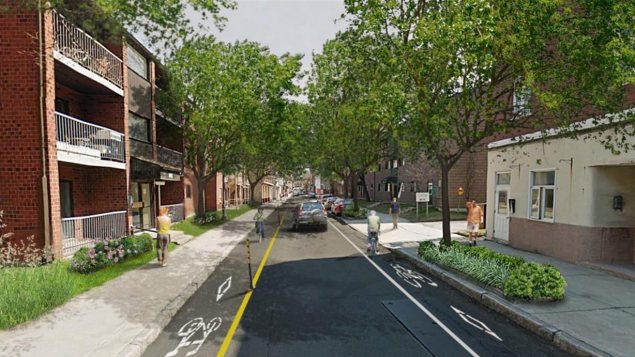
Recent updates for Ontario, Québec, and the Maritimes to the Complete Streets for Canada map added 24 new municipalities with Complete Streets policies or approaches (19 in Ontario, 3 in Québec, 1 in New Brunswick, and 1 in Newfoundland and Labrador). It is encouraging to see a significant proliferation of Complete Streets concepts in Official Plans, Transportation Master Plans (TMP), Streetscape Design Manuals, and Active Transportation Plans, yet standalone Complete Streets policies remain quite rare. Implementation strategies and specific targets are even less common.
In terms of Central and Eastern Canadian municipalities, our search revealed that so far only Toronto possesses dedicated Complete Streets design guidelines in a standalone document. While Toronto’s ambitious design guidelines were completed earlier this year, when presented to the Public Works and Infrastructure Committee in February 2017, the Committee referred the guidelines back to staff requesting further information on several issues. An implementation strategy, including training and capacity-building for staff and contractors involved in street design and delivery, has also not yet been produced.
Montréal’s 2013 “Quartiers Verts: Guide d’aménagement durable des rues de Montréal” fulfills a very similar role to Toronto’s Complete Streets guidelines, but Montréal provided $10 million of funding to initiate eight neighbourhood-wide “Rue Conviviale” transformations in conjunction with the release of the guide.
St. Thomas, Ontario has emerged as one of the most ambitious Complete Streets municipalities in Canada. It does not have a design manual, but it does have a policy document featuring an extensive catalogue of already implemented Complete Streets redesigns on a wide variety of street types. Complete Streets approaches are presently included in numerous municipal streetscape design manuals, but many of these are not municipality-wide, and only apply to downtowns or intensification areas.
While many municipal plans have adopted a goal of implementing Complete Streets across a municipality, Québec City possesses the only firm target to remake 25% of its streets into “Rues Conviviales” in the coming years. It has finished two Complete Streets redesigns, with seven underway, and three more projects forthcoming in 2018. Québec City also places a heavy emphasis on greening streets, and designing for four-season use with its Complete Streets redesigns. While municipality-wide policies are helpful, the absence of specific goals, funding, and an implementation plan can seriously inhibit Complete Streets transformations. Numerous Official Plans and TMPs recommend the adoption of standalone Complete Streets policies, but follow through on these recommendations has generally been non-existent to date.
However, there is still much to celebrate with Complete Streets in Central and Eastern Canada. One small, but hopefully growing trend is the inclusion of not only all modes, abilities and ages in Complete Streets approaches, but also accommodating users of all socioeconomic backgrounds. Easily accessible and convenient active transportation and transit can be a major benefit to low-income people, particularly those who are unable to afford a private automobile. Presently, only the City of Cornwall and Hastings-Prince Edward Counties include this broader approach in official documents, but hopefully as Complete Streets policies become more developed other municipalities will follow suit.
At the moment, a very strong foundation for Complete Streets exists throughout Central and Eastern Canada, with a very high percentage of major cities including Complete Streets in at least one formal policy document. Many smaller cities and rural municipalities are also incorporating Complete Streets into their Official Plans, Active Transportation Plans, and Transportation Master Plans. In May 2017, Ontario became the first Complete Streets province through updates to the Growth Plan for the Greater Golden Horseshoe. However, there is a pressing need for Complete Streets policies and approaches to be translated into action through dedicated policies and design guidelines, detailed implementation plans, and adequate and predictable funding for making streets work for all ages, abilities, modes and socioeconomic backgrounds.
